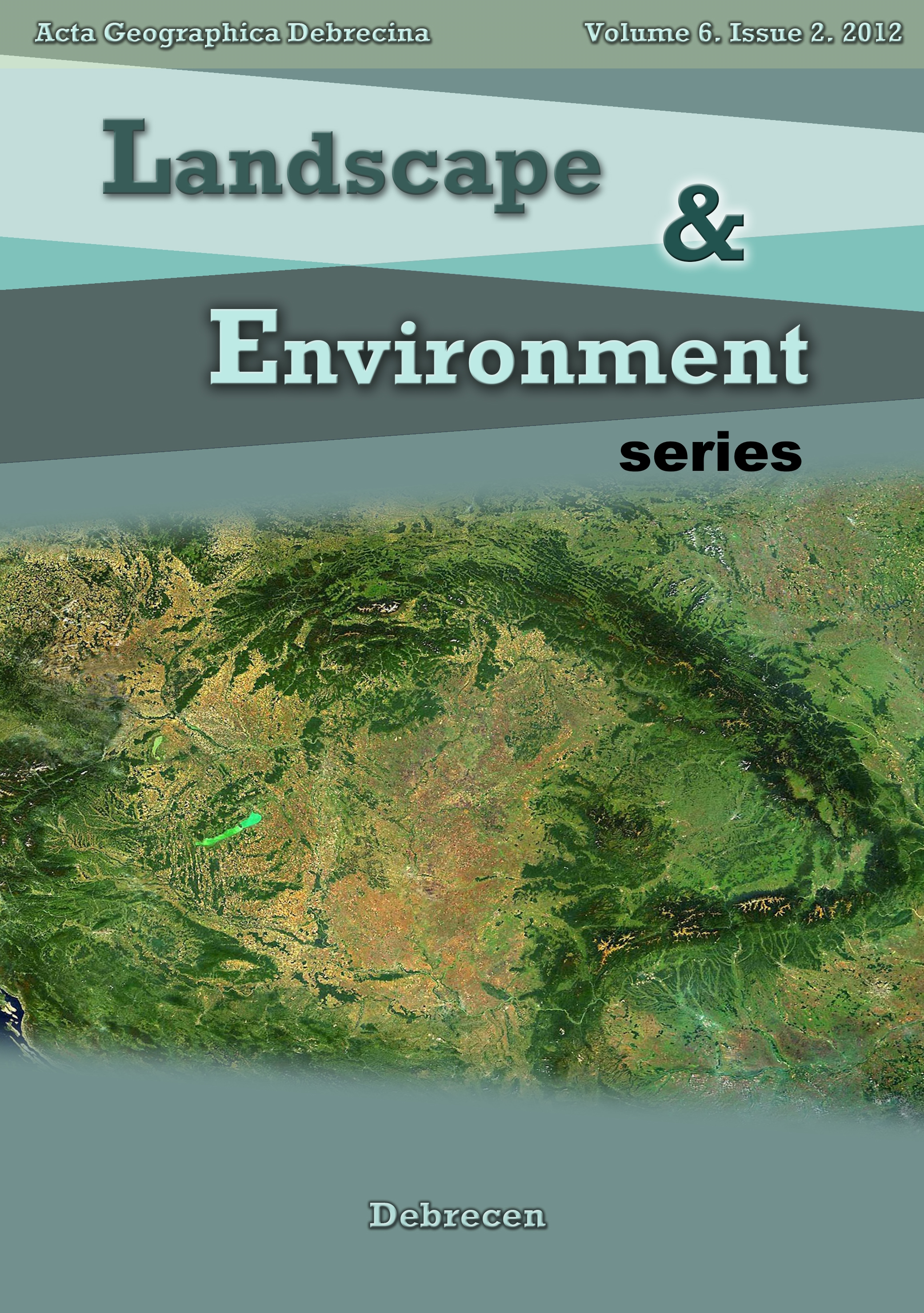Vol. 6 No. 2 (2012)
Henits, L. - Mucsi, L. Analysis of the connection between urban land cover and census districts using geoinformatical methods
Buday, T. Possible reduction of environmental impacts of geothermal energy extraction in a theoritical spa
Szemán, I. Comparison of the most popular open-source GIS software in the field of landscape ecology
Miklós, L. The concept of the landscape and its acceptance in the practice
##issue.tableOfContents##
Articles
-
Analysis of the connection between urban land cover and census districts using geoinformatical methods
52-67Views:99Remote sensing resources are usually used in research to better understand urban built-up density, spatial structure and the processes of change. Based on results of image segmentation, landscape metrics indexes, texture and pattern may be analyzed beside the spatial changes in urban reflectance. Social processes within the settlement can be analyzed efficiently, although the census data may also be connected to the urban land cover data through geoinformation systems. On the research project different parameters of urban segments, i.e. patch number, mean patch area, total patch area, total patch perimeter, patch density and edge density, formations that make up the urban pattern were analyzed. Urban functional districts of different built-up density were separated using appropriate indexes, and extending the database with spectral content made it possible to review district boundaries and to mark new boundaries due to these changes.
pdf78 -
Possible reduction of environmental impacts of geothermal energy extraction in a theoritical spa
68-75Views:136Sustainable thermal water production involves the protection of the used reservoirs, as well as the minimizing of the environmental impact (caused by heat, gas and dissolved solid). Four water extraction models are discussed in which the water and heat demand of the theoretical spa are supplied using different sources. The most environmental friendly variation contains three wells with different depths of screening. In this case the dissolved gas and solid content became the lowest, as well as the radius of influence based on drawdown calculations. Beyond the environmental impact the owner have to consider other economic aspects, such as the number of wells, the possibility of independence from gas services, which force the owner to choose not the most environment friendly way. Optimizing the various factors, thermal water extraction for medical and wellness purposes could be feasible and appropriate for sustainable operation.
pdf88 -
Comparison of the most popular open-source GIS software in the field of landscape ecology
76-92Views:355GIS (Geographic Information System) software is a very useful tool in modern landscape ecology research. With its help data can be obtained which can - after processing - help to understand and demonstrate the processes taking place in the landscape. Since direct environmental measurements and sampling from a large area are, in many cases, difficult or even impossible, modelling with GIS tools is very important in the workflow of landscape research and landscape analysis. In this article we review the best known open source GIS systems and geographic information tools with possibilities for landscape ecology application. Furthermore we will introduce all the basic concepts that are associated with these open source software programmes. We provide a comparative analysis of the most widely used open source GIS applications, where, through a specific example, we will examine how these tools are used to produce basic landscape metric indicators. We will examine those functions of the programmes that are necessary to produce a complete thematic map, and finally we will emphasize various other important functions of the software to give adequate information for those users who choose open source code GIS tools, for financial reasons or otherwise, to complete a landscape ecology analysis. Our opinion is that this type of comparison is much more informative than those done by proprietary software, because these latter are all based on a basic data library, and therefore yield similar results (proj4, gdal/ogr, jts/geos, etc.) to their ‘paid’ competitors. This examination is timely, as these programmes have been gaining popularity over the last 20 years thanks to their continuous development, their independence from any platform, and their compatibility with most data formats.
pdf253 -
The concept of the landscape and its acceptance in the practice
93-104Views:109The landscape is historically perceived basically in two ways: as a tangible material reality and also as an intangible, mental and artistic experience. The basic practical policies related to the landscape ecology under the umbrella conception of the integrated land resources management are based on materialistic geocomplex/geosystem conception. In last decades a massive wave of the “friends of landscape” appeared, who shifted their attendance to the cultural-historical-value and perception based approach to the landscape. This wave is supported by the compromiss soft definition of the landscape and the wording of the European Landscape Convention. Nevertheless, the penetration of the landscape to the practical policies requires the materialistic approach and definition of the landscape.
pdf103
